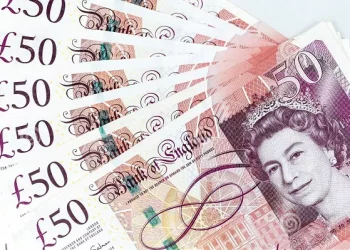The foreign exchange (forex) market is an ever-evolving and dynamic field where currencies from all over the world are traded. With trillions of dollars exchanged daily, the forex market is the largest and most liquid financial market globally. As a foreign exchange trader, understanding the major currencies and their performance is critical to making informed decisions. One such currency that often sparks interest in the forex community is the “peso.”
But what is the largest peso? This term is used in different contexts and can refer to different currencies that carry the peso name. To explore this concept fully, we will dive into the role of pesos in the forex market, identify which peso is the largest, and explain how its value is determined. This article will also provide insights into the implications of trading peso-based currencies, making it a useful read for both novice and seasoned forex traders.
The Peso: A Quick Overview
The peso is a currency used in several countries, predominantly in Latin America and the Philippines. The term “peso” itself is derived from the Spanish word for “weight,” which historically referred to a unit of currency equal to a specific weight of silver. As a result of Spanish colonization in many countries in the Americas, the peso became a widely recognized and used currency.
The most well-known pesos in the forex market are the Mexican Peso (MXN) and the Philippine Peso (PHP). Other countries, such as Argentina, Chile, and Colombia, also use the peso as their official currency. These pesos have distinct values based on their respective countries’ economic conditions, fiscal policies, and global market influences.
However, the term “largest peso” is commonly used in reference to the one that carries the highest value in the global market. To assess which peso qualifies as the largest, we need to look at factors like exchange rates, economic strength, and the impact of international trading.
The Mexican Peso: The Largest Peso in the Market
When considering the question of the largest peso, the Mexican Peso (MXN) undoubtedly comes to mind. The Mexican Peso is the most widely traded and significant peso currency in the forex market, and it ranks as one of the top 15 most traded currencies in the world.
The Mexican Peso’s global importance is driven by Mexico’s role as a major player in international trade. It is the second-most traded currency in Latin America, after the Brazilian Real (BRL), and its usage extends beyond Mexico’s borders. The proximity of Mexico to the United States—one of the largest economies in the world—contributes to the peso’s prominence, as there are large amounts of trade between the two nations.
As of 2024, the exchange rate of the Mexican Peso has fluctuated around 18-20 MXN per US dollar. This makes the peso one of the most affordable currencies relative to the US dollar and other major currencies, although it should be noted that the value of the peso can be volatile due to external factors like oil prices, geopolitical events, and changes in US-Mexico relations.
The Role of the Mexican Peso in Forex Trading
In the foreign exchange market, the Mexican Peso is classified as an emerging market currency, which means its value is often influenced by economic conditions, government policies, and investor sentiment. The peso has high liquidity due to the large volume of trade that flows between Mexico and the United States. Forex traders and institutions actively engage in the buying and selling of MXN as part of their trading strategies.
The Mexican Peso is often paired with other major currencies such as the US Dollar (USD), the Euro (EUR), and the Japanese Yen (JPY). The most commonly traded pair involving the Mexican Peso is the USD/MXN, and this pair is particularly popular with forex traders looking to hedge against risks in the US economy or take advantage of fluctuations in oil prices, as Mexico is a significant oil exporter.
Traders can use various strategies when trading the MXN, such as trend-following techniques, news-based trading, and technical analysis. The currency’s volatility can present opportunities for traders who are comfortable with higher risk and can make use of leverage in their trades.
The Philippine Peso: A Less Traded but Significant Peso
While the Mexican Peso is the most significant peso in terms of global trading volume, the Philippine Peso (PHP) also holds importance in the forex market, especially within Southeast Asia. The Philippine Peso is the official currency of the Philippines, an archipelagic country that has experienced significant economic growth over the past few decades.
The Philippine Peso is not as widely traded as the Mexican Peso, but it still holds a strong position in regional trade. As of 2024, the exchange rate for the Philippine Peso typically hovers around 50-60 PHP per US dollar, though it can fluctuate based on various economic and geopolitical factors. The Philippines has a large overseas workforce that sends remittances back home, making the peso sensitive to changes in global economic conditions.
Although it doesn’t have the same level of liquidity or global exposure as the Mexican Peso, the Philippine Peso is actively traded in the forex market, with major pairs such as USD/PHP being popular among traders in the Asia-Pacific region.
Peso Currency Pairs in Forex Trading
When trading pesos in the forex market, traders typically focus on specific currency pairs. The forex market offers many different peso-based currency pairs, but some are more popular and liquid than others. For instance, as mentioned earlier, the USD/MXN pair is a dominant pairing due to the trade relationship between the United States and Mexico.
In the case of the Philippine Peso, the USD/PHP is the most common pair. There are also a variety of regional pairs involving the peso, such as the JPY/PHP and EUR/PHP, though these are less frequently traded compared to major pairs. Other countries that use the peso, such as Argentina (ARS) and Chile (CLP), also have their own forex pairs, but these are not as heavily traded on a global scale.
Factors That Influence Peso Values
The value of any currency, including the peso, is influenced by a range of economic, political, and market factors. To understand which peso is the largest and why, traders must consider these influences when evaluating its performance. Some of the key factors that affect the peso’s value in the forex market include:
Interest Rates and Central Bank Policy: The central banks of countries that use the peso, such as the Bank of Mexico (Banxico) or the Bangko Sentral ng Pilipinas (BSP), set interest rates that influence the attractiveness of their currencies. Higher interest rates tend to attract foreign capital, which can increase demand for the peso, driving its value up.
Inflation: Inflation affects the purchasing power of a currency. Countries with high inflation may see a decline in the value of their currency, while those with low inflation often experience currency appreciation.
Trade Balance: The trade balance—whether a country is exporting more than it imports—can also impact the value of the peso. A positive trade balance generally strengthens the peso, while a negative trade balance can weaken it.
Commodity Prices: For countries like Mexico, which are major exporters of oil, commodity prices play a significant role in determining the value of their currency. If oil prices rise, the Mexican Peso may appreciate as the country receives more revenue from exports. Conversely, falling commodity prices may lead to a depreciation.
Geopolitical Events: Political stability and geopolitical events can have a profound effect on the peso’s value. For example, if there is political unrest or instability in Mexico or the Philippines, traders may lose confidence in the peso, causing its value to fall.
Foreign Investment: Countries that attract foreign investment often see their currencies appreciate. If investors are confident in a country’s economic outlook, they may buy the country’s peso, increasing its value.
Conclusion
In conclusion, the largest peso in the forex market is generally considered to be the Mexican Peso (MXN), due to its high liquidity, global trade significance, and the size of the Mexican economy. Although other peso-based currencies like the Philippine Peso (PHP) and the Argentine Peso (ARS) also have important roles in regional trade, they are not as widely traded or as influential on a global scale as the Mexican Peso.
For forex traders, understanding the dynamics of peso currencies is essential to making informed trading decisions. Factors like interest rates, inflation, trade balances, and global commodity prices all play a role in shaping the value of the peso. Whether you are trading the Mexican Peso, the Philippine Peso, or another peso-based currency, staying informed about economic developments and global market trends is crucial to success in the foreign exchange market.
By keeping these key elements in mind, traders can gain a better understanding of the forex market, manage risk effectively, and potentially capitalize on opportunities within peso-based currency pairs. As with all forex trading, a careful and informed approach to trading is essential, and the largest peso provides an important example of how currencies can shape the global financial landscape.
Related Topics:



























